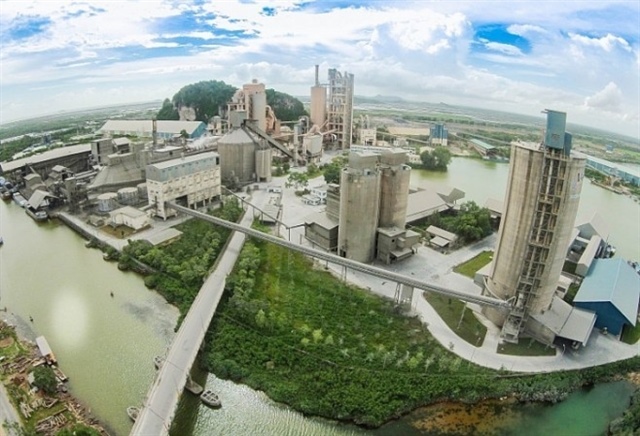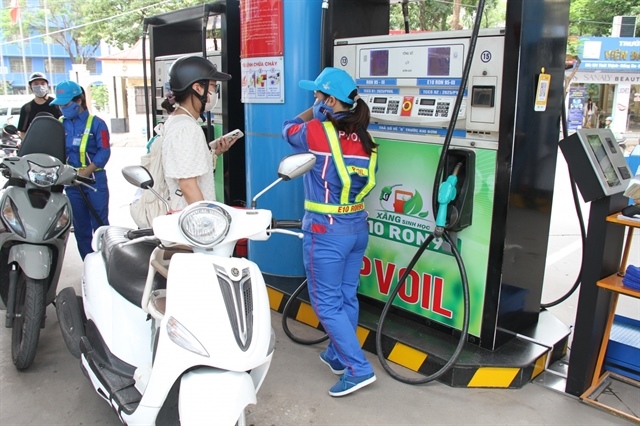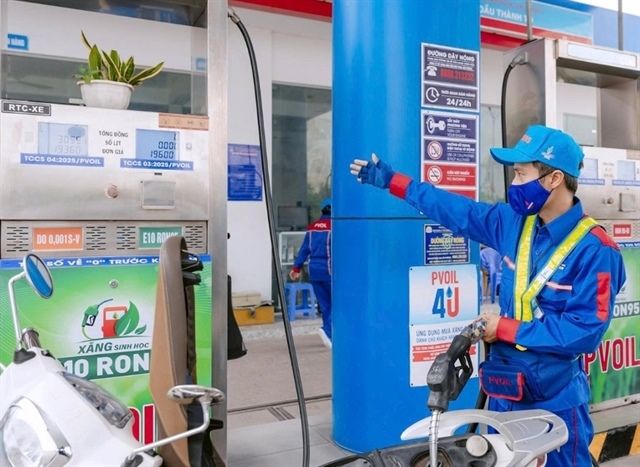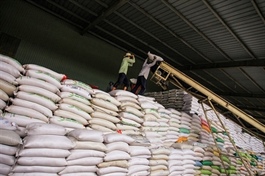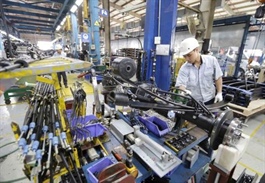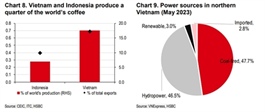Exports of cement and clinker fall
Exports of cement and clinker fall
Exports of cement and clinker products reached 14 million tonnes in the first six months of this year, a year-on-year decline of 15 per cent. Export value is estimated at US$700 million.
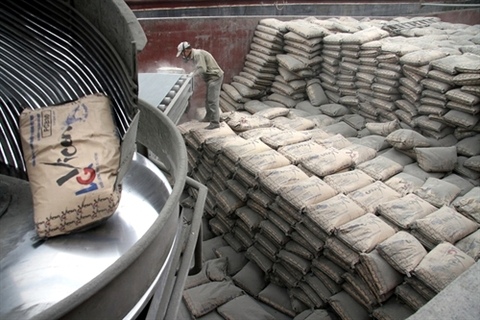
Sacks of cement at Hải Phòng Cement Company. — VNA/VNS Photo |
The Ministry of Construction said that production and consumption of some key construction materials in the first half of the year declined sharply, of which cement fell by 10 per cent over the same period.
Cement output is estimated at 39 million tonnes, down 7 per cent; while consumption reached 43 million tonnes, down 10 per cent over the same period last year.
“Surplus supply, fierce competition, and the decline in the real estate market are reasons given for the reduced performance, said Hà Quang Hiện, Chief of Staff of the Việt Nam National Cement Corporation (VICEM).
The export price of clinker is low, partly due to the real estate market freeze, but also due to businesses lacking capital and interest rates remaining high, all leading to stagnation in the market of construction materials.
Accordingly, the adjustment of cement output in line with movements in the construction and real estate markets is inevitable.
Lương Đức Long, Vice Chairman and General Secretary of the Việt Nam National Cement Association said that cement production and consumption decreased last year compared to 2021.
From the beginning of this year until now, cement production and consumption haven't seen much improvement. Meanwhile, the cement industry is facing difficulties such as increasing fuel and transportation prices, alongside falling market demand.
Output is congested, causing product backlogs, which makes difficulties pile up for businesses.
Coal accounts for 45 - 55 per cent of the cost of the production of one tonne of clinker; while electricity costs account for 17 - 20 per cent of the cost of a tonne of cement.
The rise in energy prices has led to an increase in transportation costs. Facing a situation of slow domestic consumption, many cement enterprises have chosen to export as a temporary solution to deal with excess inventory.
However, the country's cement export market was also not positive in the first six months of the year.
The situation of cement exports to Việt Nam's largest market, China, is quite bleak as the real estate crisis in this country has also not fully recovered.
Việt Nam's second-largest cement export market is the Philippines, but recently this country has officially announced the imposition of a temporary anti-dumping tax on cement products from Việt Nam, causing difficulties for cement exports to the market.
Businesses want to export cement and clinker to the Americas, but the volume is low due to exporting to traditional markets such as the Philippines, China and Bangladesh not yet solving the surplus.
Starting from October this year, 27 member states in the European Union (EU) will pilot the carbon border regulation mechanism.
From 2026, the EU will impose a carbon tax on iron and steel, cement and fertiliser, which will make it more difficult for Việt Nam to export cement to Europe.
In particular, the clinker export tax increased from 5 per cent to 10 per cent according to Decree No 101/2021/NĐ-CP, in order to limit the export of products that use a lot of raw materials, fossil fuels and non-renewable resources.
The increase in export tax and the price of export clinker not rising has made the difficulties even worse.
Lương Đức Long proposed to promote public investment and clear capital for real estate.
Accordingly, it is necessary to remove the output bottlenecks of the material industry by increasing the construction of housing, urban areas, and roads, he said.
In the immediate future, cement businesses should find ways to develop new products and improve others to increase their competitiveness in the market in order to attract more customers and enhance sales, he said.
To do this, experts recommend that cement businesses need to optimise production by improving technology to increase productivity and reduce costs. This will help businesses enhance competitiveness and increase profits.



